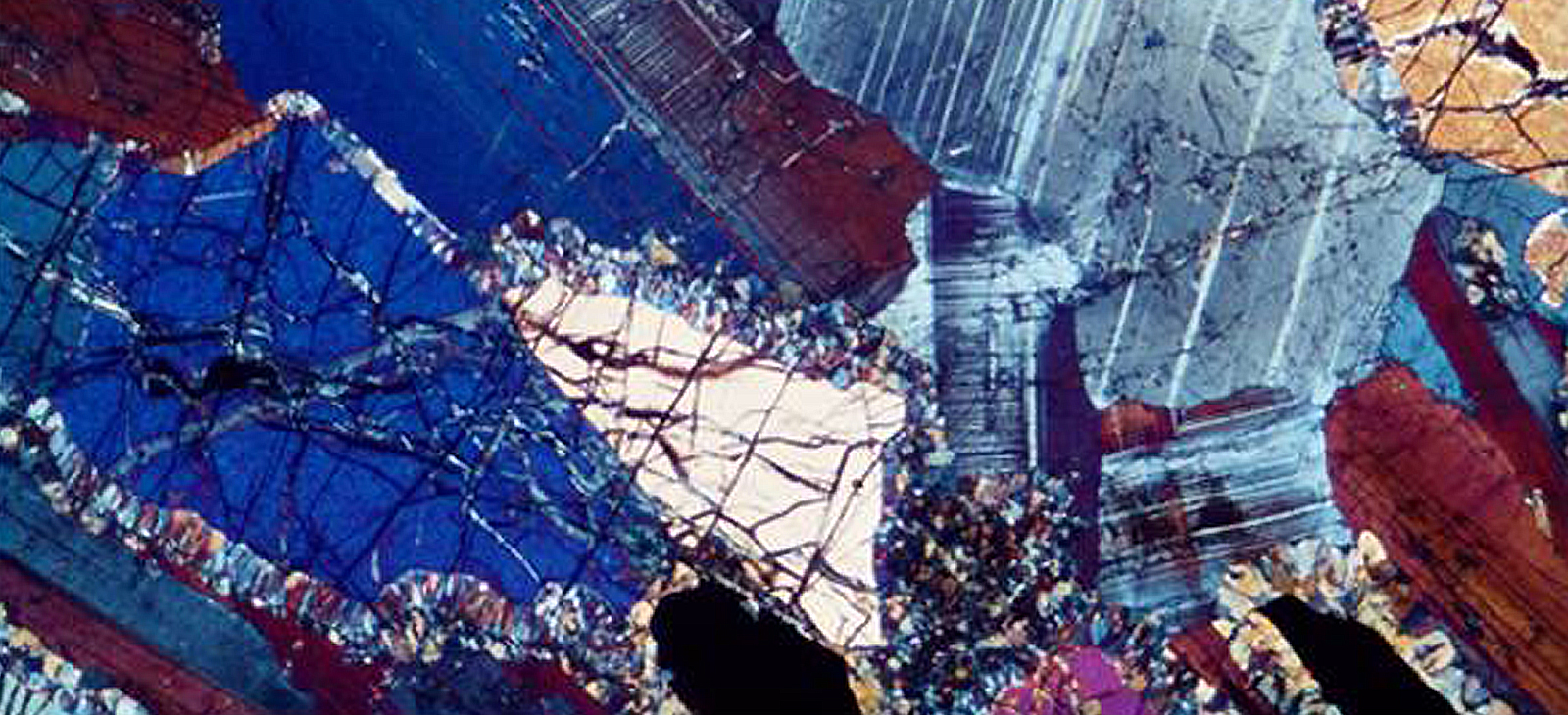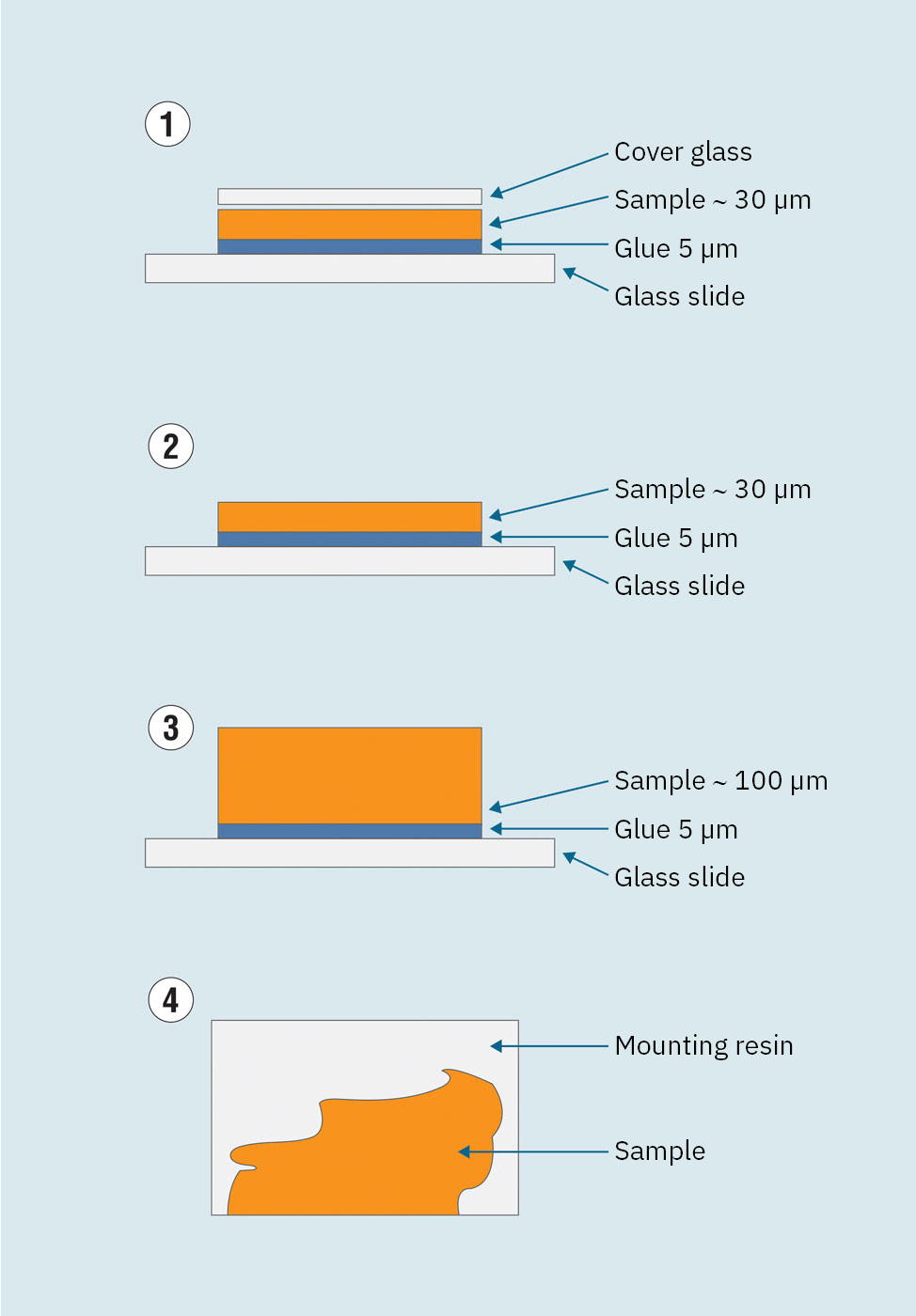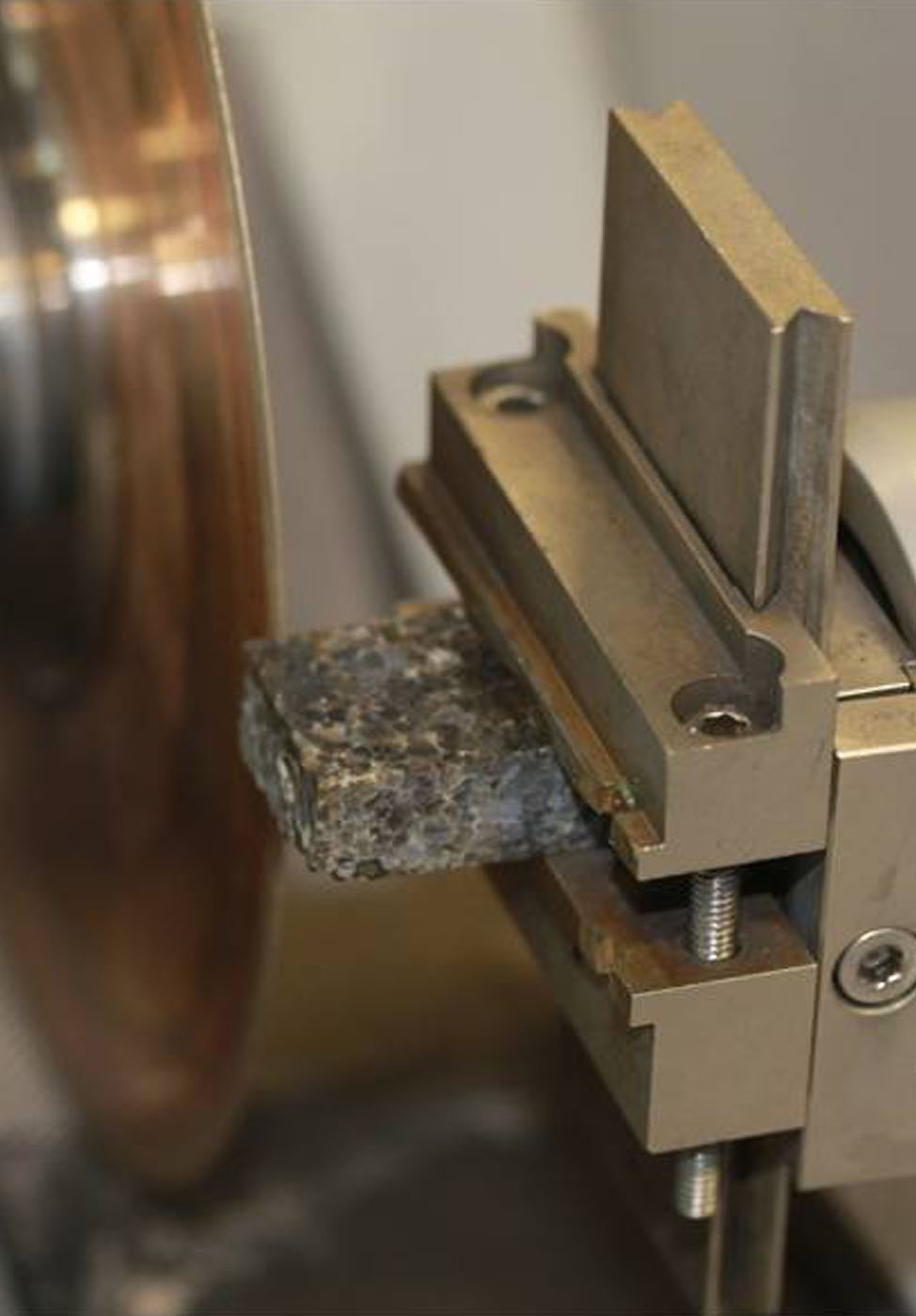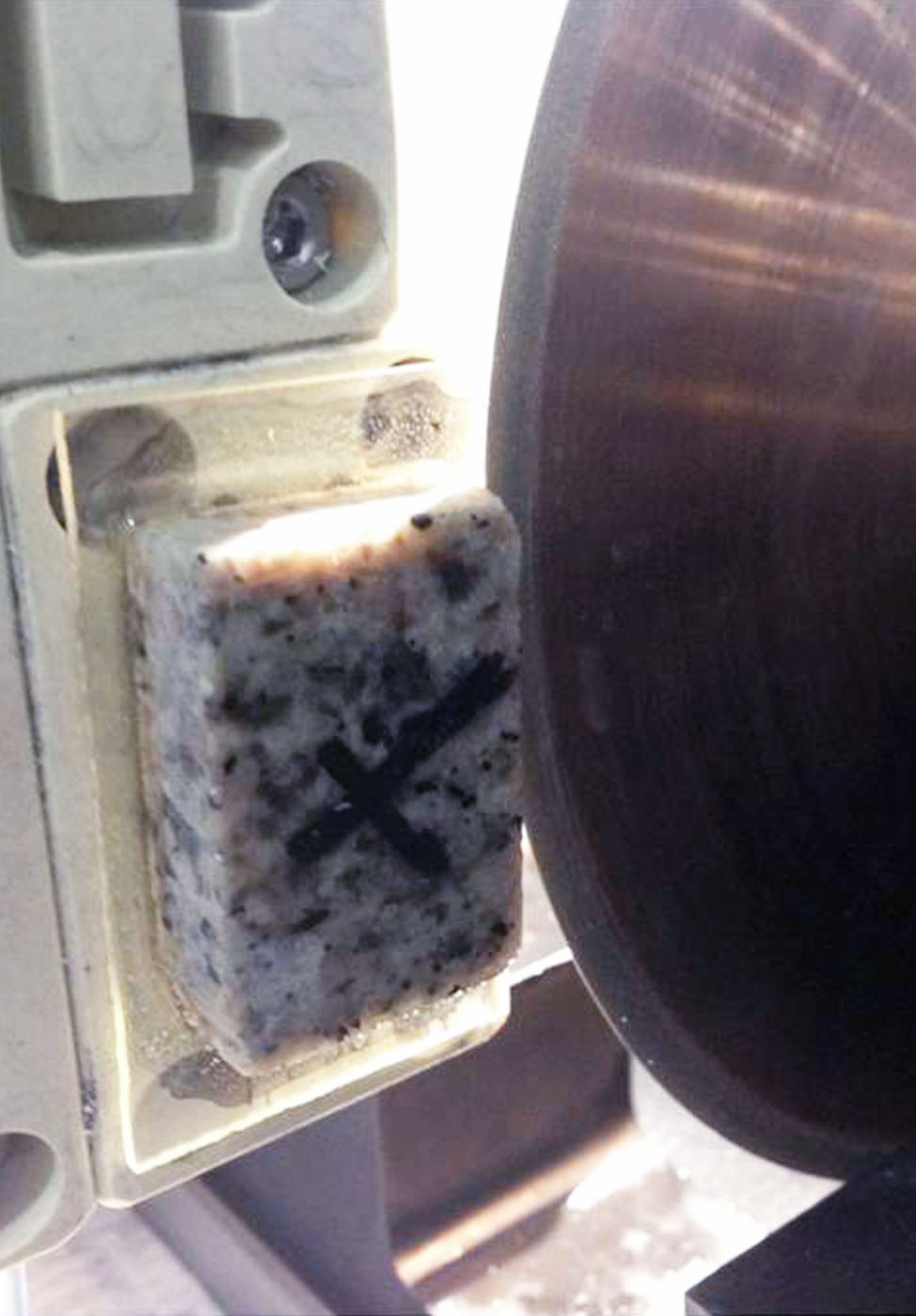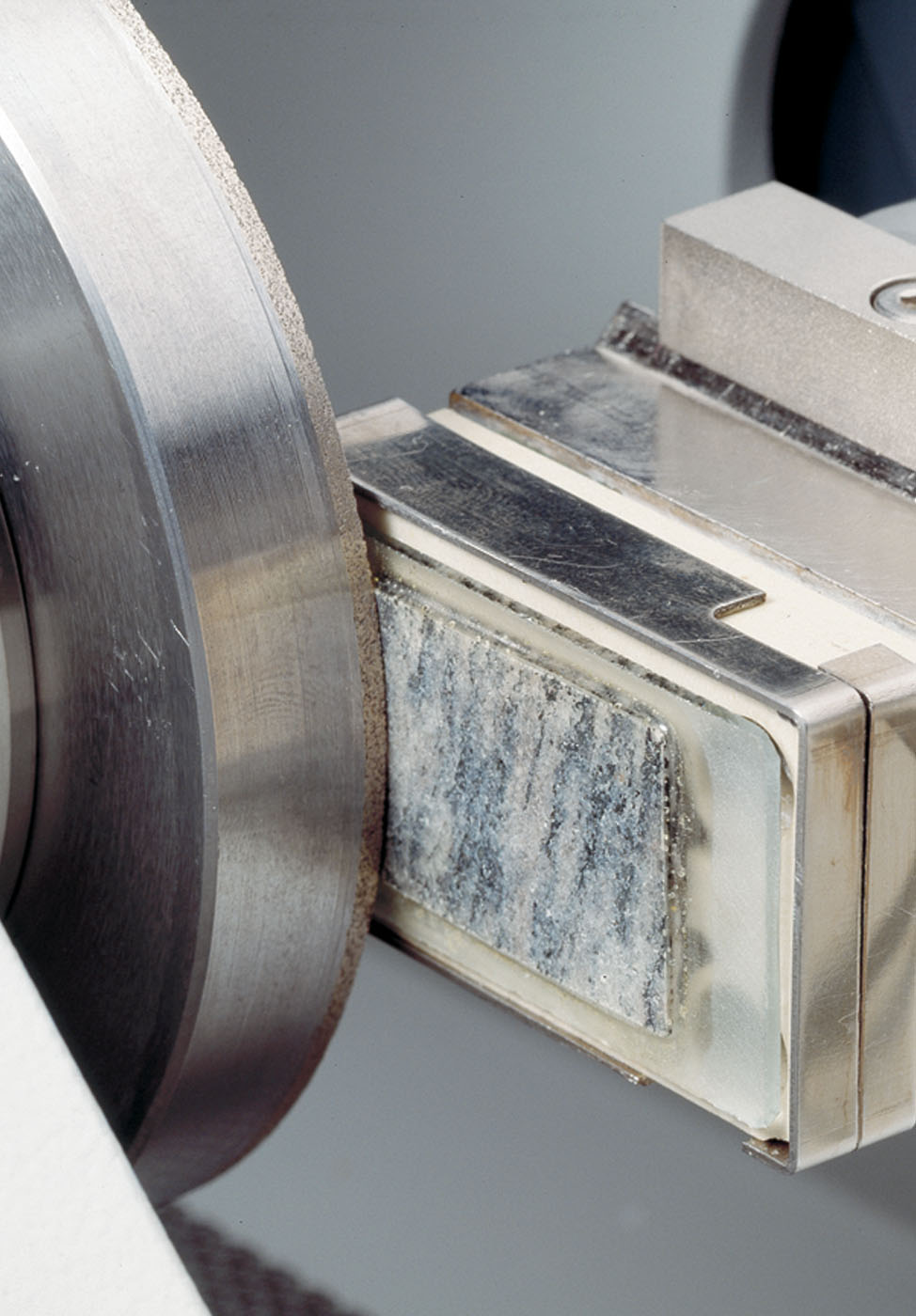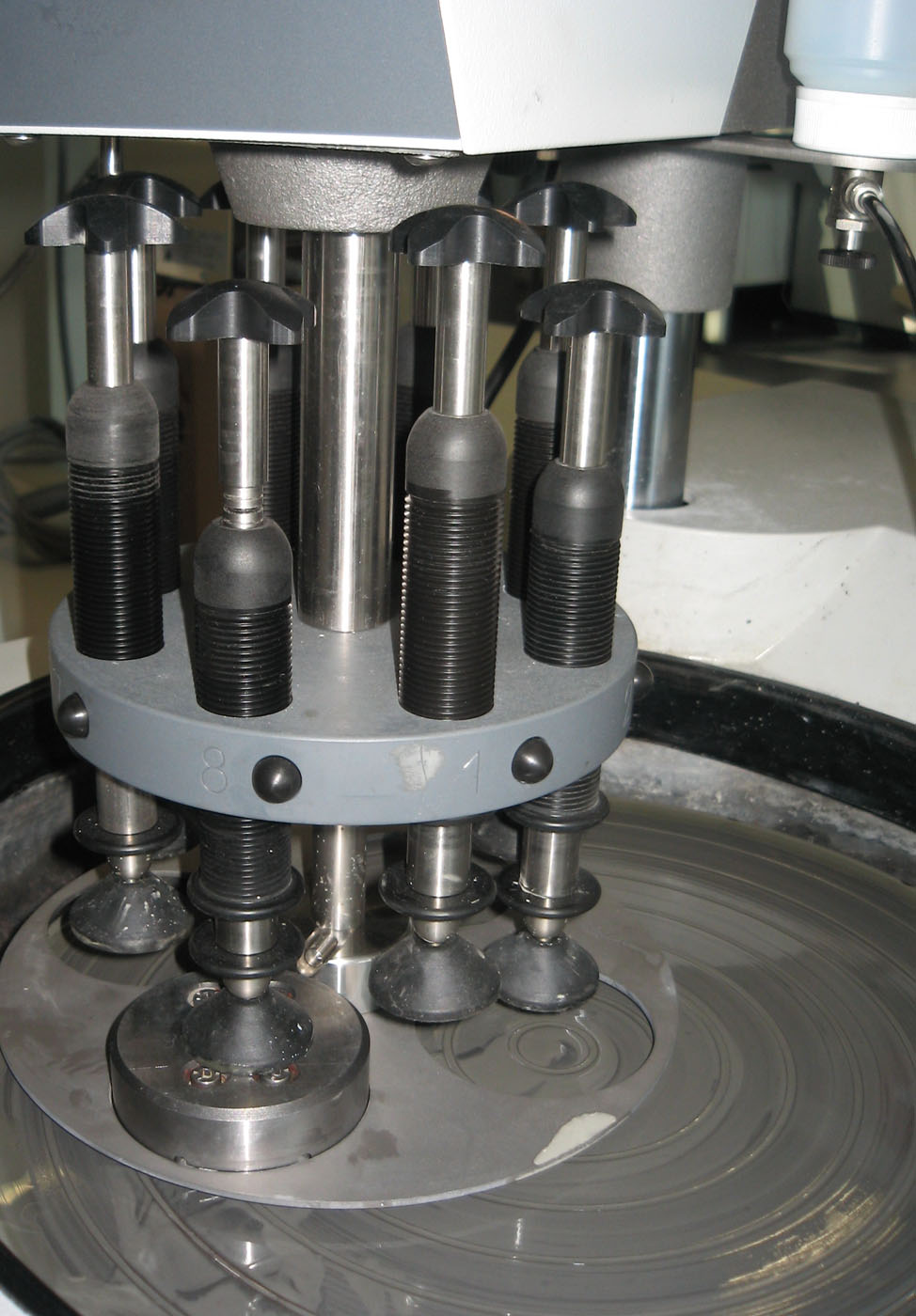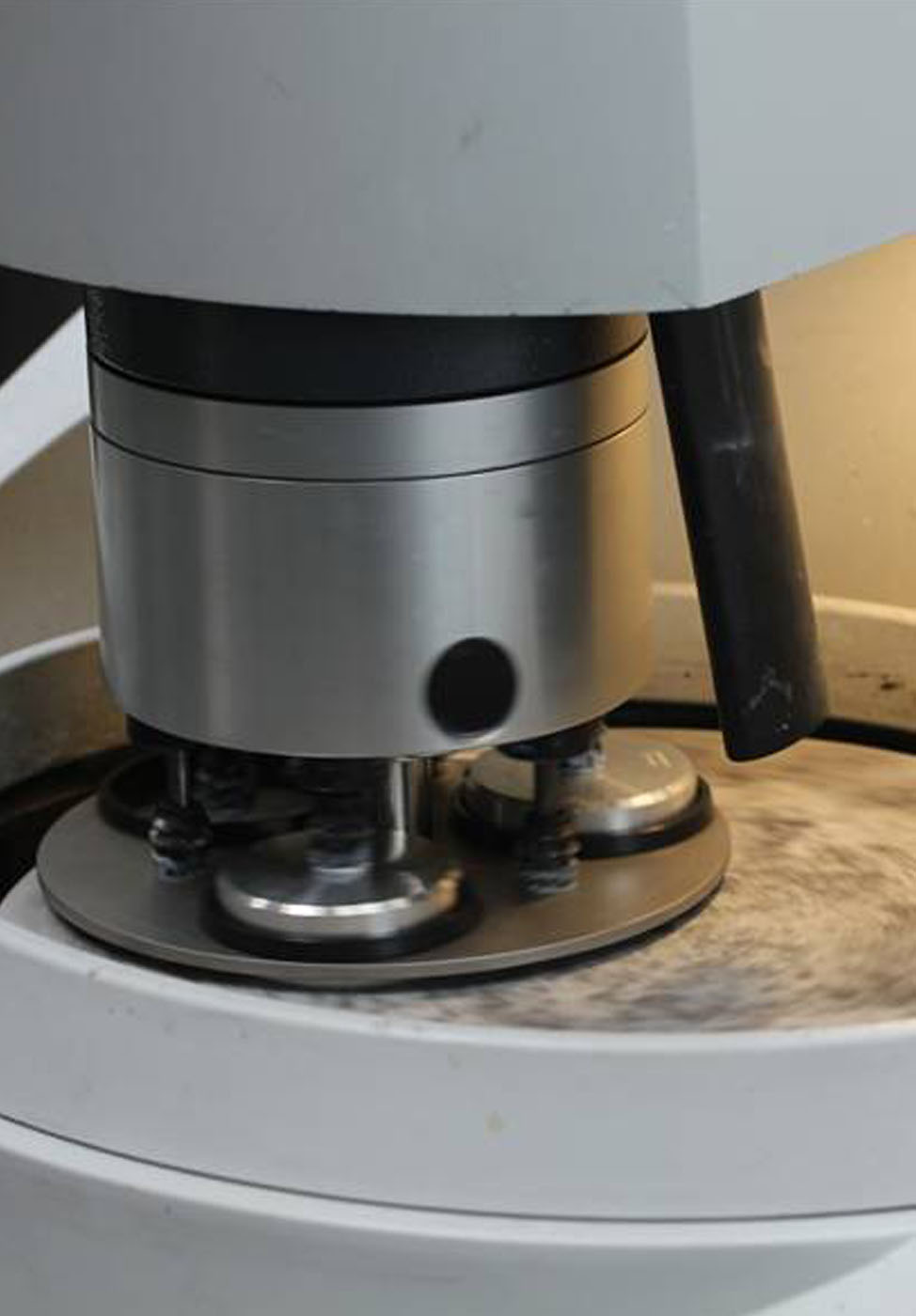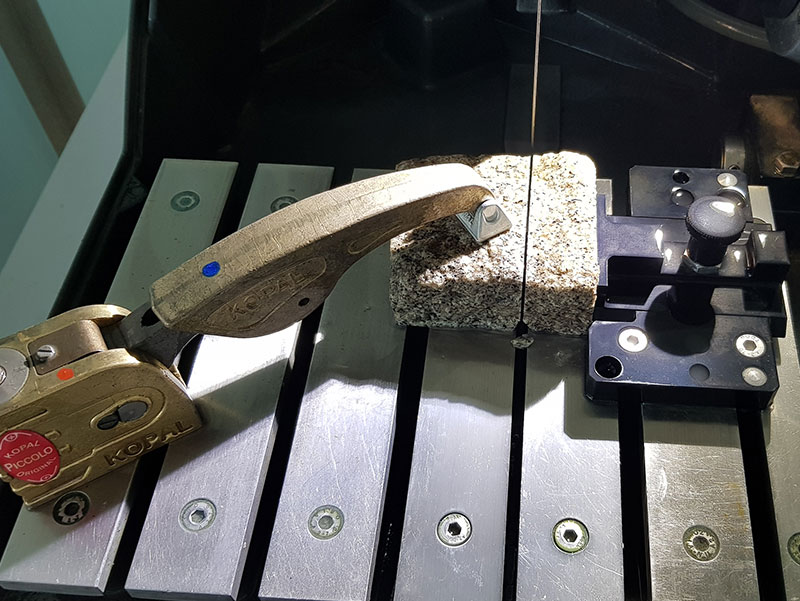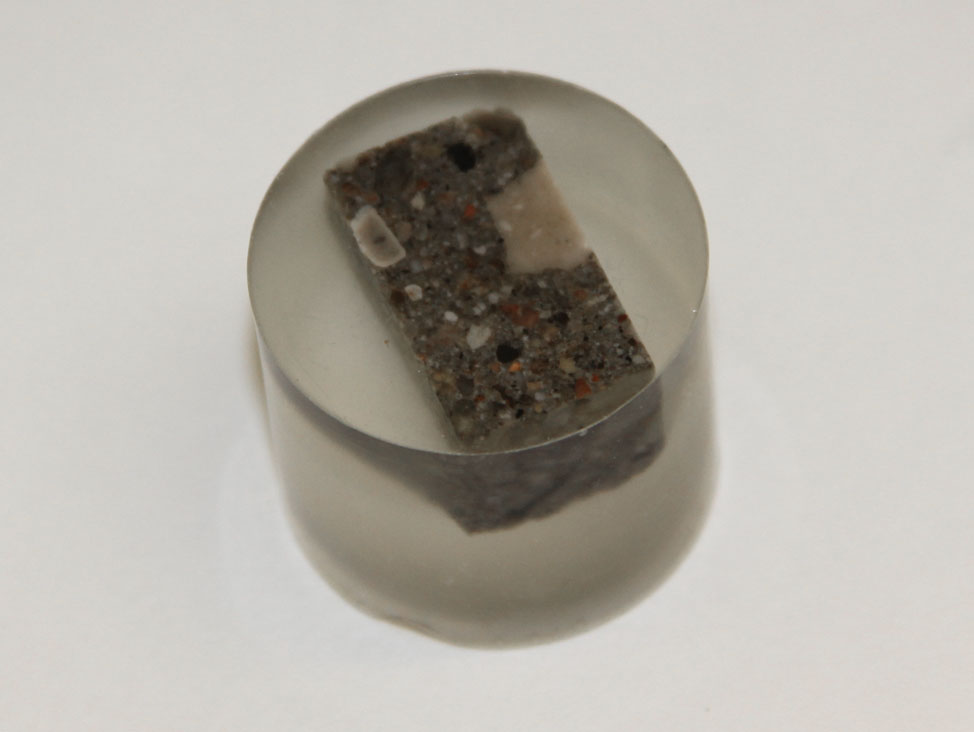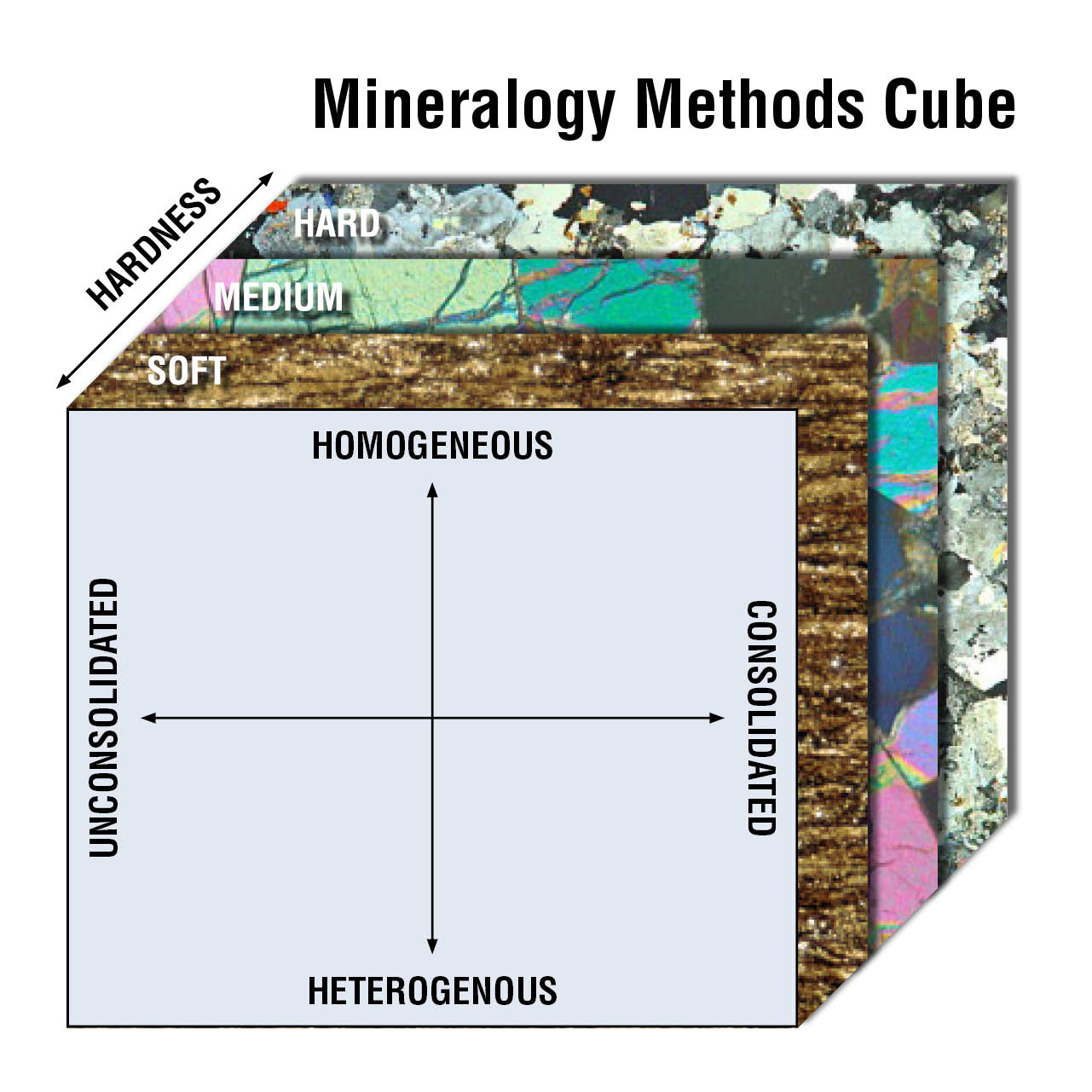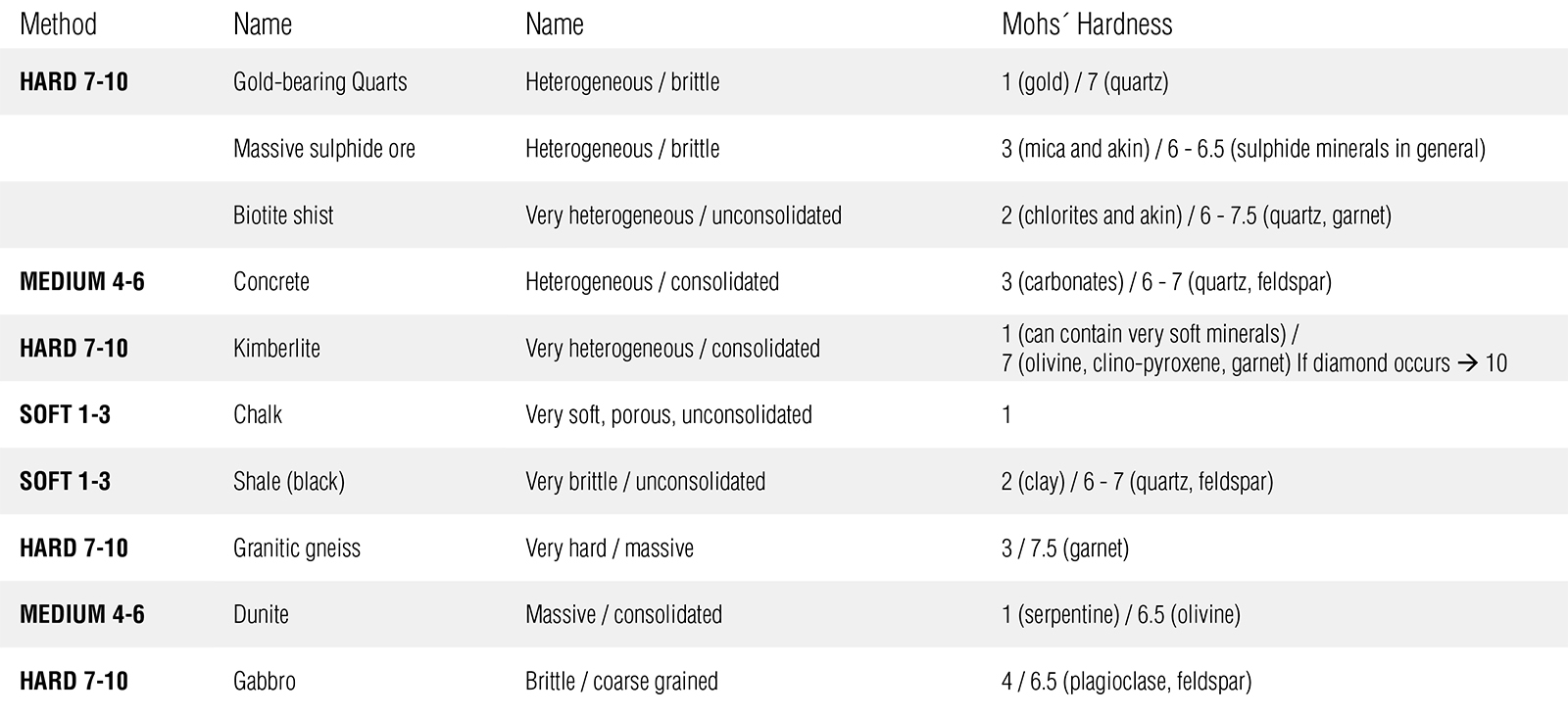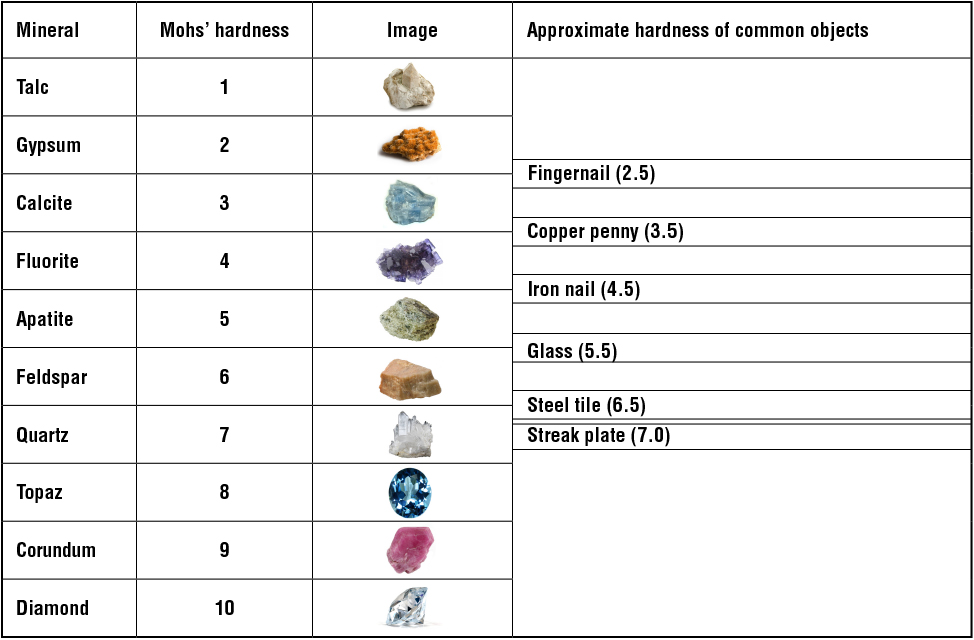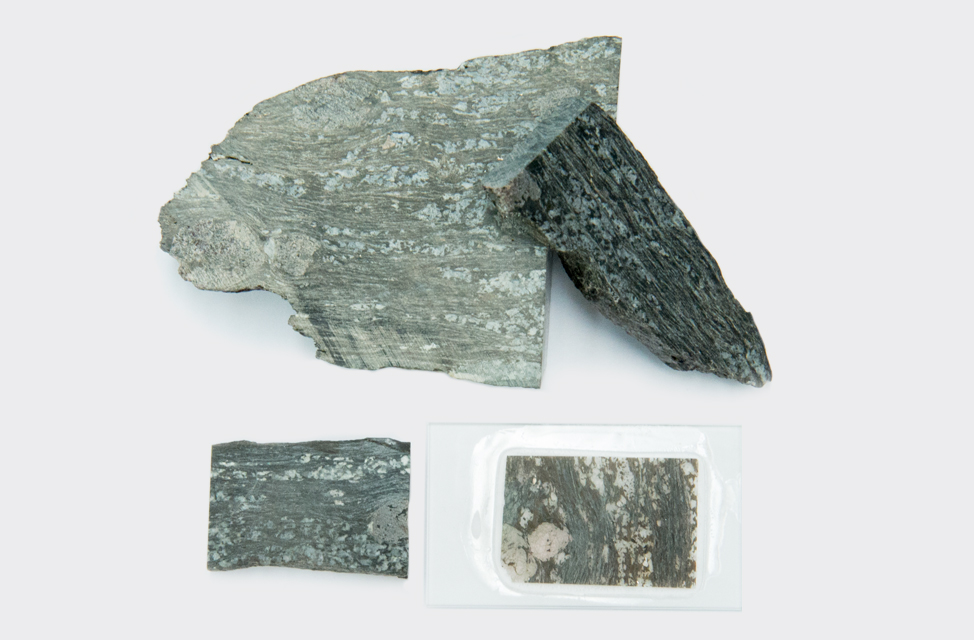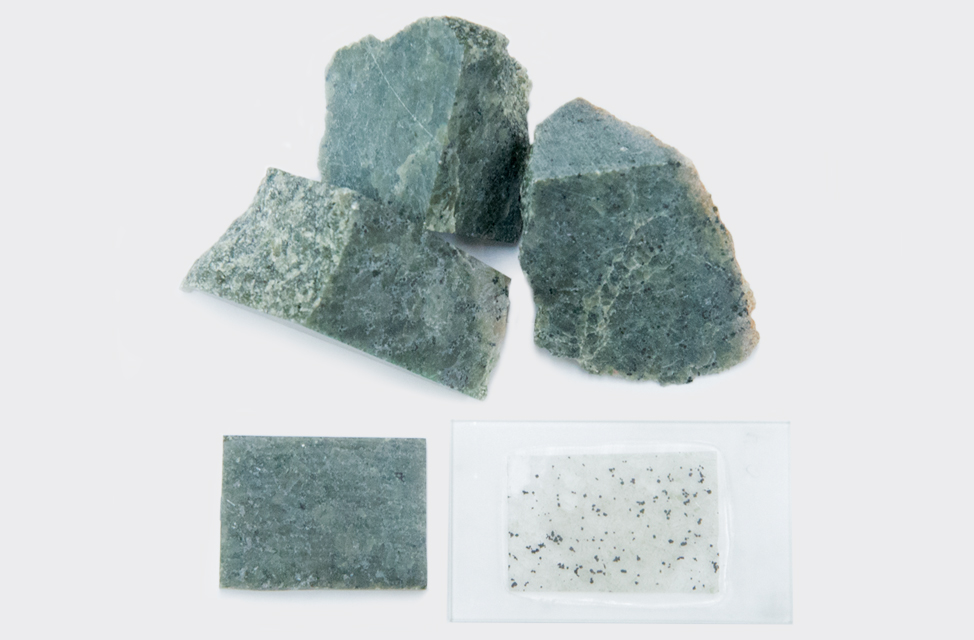Hardness
Hardness is defined by the hardest mineral that makes up at least 15% of the rock.
The cube will be divided into three 2D charts, representing three levels of hardness (Mohs)
Soft 1-3
Medium 4-6
Hard 7-10
The homogeneity / heterogeneity of a rock is not determined by smaller or larger mineral content. It is related to the rock face "texture," including the internally related grain size of the minerals and their immediate appearance. To put it simply, one can say that a rock can be characterized as homogeneous if it appears structurally and compositionally uniform in all directions (uniform pattern).
Consolidation
Make something physically stronger and more solid
Consolidated: sticking well together – so the material becomes stronger or more solid/massive.
Interlocked grains, fracture/porous free
Unconsolidated: "loose" – porous - breaks easily – poorly cemented grains, etc.
Homogeneity
Homogeneity and heterogeneity are concepts relating to the uniformity in a material.
Homogeneous material is uniform in composition or character – similar properties.
Heterogeneous material is distinctly non-uniform in these qualities.

